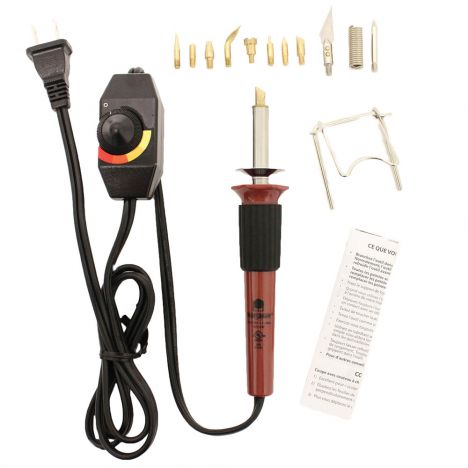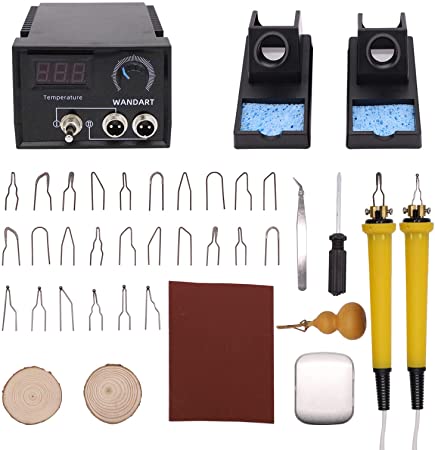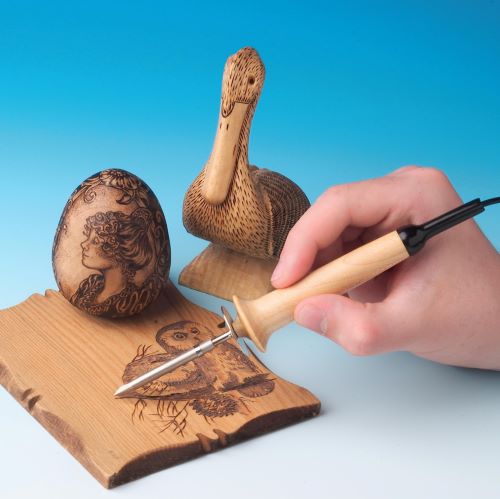
To learn how to wood burn, you will need to purchase a wood burning kit. It includes a sponge or tin box, soldering materials, and various temperature settings. Before you start to burn larger items, it is a good idea to try scrapping. If you don’t enjoy burning wood, you might be able to purchase a precut piece of wood that you can try out at home. After you've learned the basics, you can create your own decorations.
Scumbling
You can use graining to give your project a unique look. Graining can also be done with metal combs that have different widths of teeth, or a grainingbrush. The scumble should match your ground colour. You can get it in many shades of natural wood. The appropriate ground colour can be found on the container or on the manufacturer's colour card. You can mix several techniques to achieve a more complicated look if you aren't sure which one to use.
To create realistic shapes, you must master sweeping. Sweeping means drawing lines slowly, but quickly. Tapered lines result. Scumbling, by contrast, is an excellent technique for creating texture. Scumbling can also create a smooth burn. Before you try scumbling, it is important to learn how to sweep. Combining both sweeping or scumbling can produce the best results. Scumbling, in addition to creating realistic shapes, is an important part of wood burning projects.
Dotting
The ancient art of dotting wood-burning dates back centuries. It creates a realistic look and gives wood burning projects a shine/opaque contrast. Dotting requires a hot torch and a large-rounded pen tip. Dotting takes longer than stippling, and you need to clean the tip if too much material has accumulated.

The steps below will help you get wood burning started with dots. Begin by holding your pencil or pen parallel with the wood. Move down slowly. This technique will create straight, uniform lines. Pushing wood will create uneven lines. Follow the same procedure for drawing dots once you have your wood burning tool. After you have made a few strokes, it is possible to start practicing with lighter pressure and increasing the heat intensity.
Shading
Shades are an art form when wood is burned. A shading technique can make an image more interesting or realistic. Different wood-burning techniques can produce different results. Try them out on scrap wood. After some practice, you will be able to create shading in 3D. This article will discuss several techniques for shading. The last step is to pick a burning tool.
First, ensure you're comfortable. It's not a good idea to burn your stomach. When wood burning, it's essential to avoid long lines as they can get caught in the wood and create dark areas. Work in small stages so that mistakes can be corrected with sandpaper. Once you are finished, you will have the perfect shape for displaying your finished product. Don't forget to take small steps so you don't burn the wood too often.
Cross-hatching
If you have ever seen a beautiful woodburning project, you may have wondered how the artist achieved such an effect. It is usually a combination of multiple techniques. One of the most popular methods is cross-hatching, which creates a smooth gradient between dark and light colors. This method is particularly useful when done with cheap wood. This technique is suitable for any skill level, from beginner to advanced.
First, learn how to use paint markers. When you first start woodburning, they are an indispensable tool. You must hold them in a position that allows you to control the point of the pen. Angle the tip of the pen so it touches the wood. Next, you can trace the pattern on graphite paper. You should press well enough to make a straight line. Also, avoid repeating the same area twice.
Using a stencil

Preparing the stencil is essential before you begin wood burning. There are several kinds of stencils, including metal and plastic ones. If you are interested in creating something more complicated, you might consider a metal template. These stencils can be reused and cleaned easily. They are also odorless and easy to use. Once you have chosen your stencil, you are ready to begin the burning process. To get started, first prepare your wood piece.
Stencils are a great way of making your wood burning project simpler. They are available in many different designs and are an invaluable tool for anyone not skilled in lettering. To trace the design on metal, you can either use a stencil made of vinyl or a metal one. You will need more stencils if your vinyl stencils are to be reused.
Protect your work from water
After your wood burning project is completed, you need to seal it. Although it is not necessary that you learn complicated finishing techniques to protect your woodburning projects, a durable sealing agent will ensure professional-looking results. Apply the varnish to your woodburning project and allow it to dry between coats. If you follow these steps, your item will last a lifetime.
To burn your fabric, first choose a dry and well-ventilated place. Do not burn treated lumber or wood that has been exposed for a prolonged period of time to wind and rain. Also, wet wood can cause excessive smoke and inefficient burning. To ensure that the wood is dry, invest in a moisture meter. You can then use it to test the wood's moisture content. The final coat can be applied with linseed oil.
FAQ
What wooden items sell well?
The best-selling wooden items are those which have been made from wood that was harvested sustainably.
Oak, cherry and mahogany are the most sought-after wood types for furniture.
These woods not only have great strength, but also beautiful patterns and colors. If they are well cared for, they can last many years.
To protect wooden furniture from moisture damage, you should paint it first. This includes all surfaces, including drawers, doors, and handles.
Paint that is water-resistant will ensure furniture lasts for a long time.
You should use a high-quality oil-based primer followed by two coats of top coat. Depending on how much wear you expect, you might need to apply more coats of topcoat.
Spray cans or aerosol paints should be avoided. These products contain solvents which evaporate quickly and leave behind harmful fumes.
Is it necessary to be a genius in woodworking to succeed?
No. Woodworking does not require any special skills. Anyone can learn how to use basic power tools and techniques to create beautiful works of art.
Where can I locate free woodworking plans
Free woodworking plans are available online. You don't even need to buy books or magazines. Search Google for free woodworking plans. Just enter "free woodworking" into the search bar, and you'll see hundreds of websites where you can download free plans.
Statistics
- Overall employment of woodworkers is projected to grow 8 percent from 2020 to 2030, about as fast as the average for all occupations. (bls.gov)
- Most woodworkers agree that lumber moisture needs to be under 10% for building furniture. (woodandshop.com)
- Average lumber prices rose about 600 percent between April 2020 and May 2021. (familyhandyman.com)
- The best-paid 10 percent make $76,000, while the lowest-paid 10 percent make $34,000. (zippia.com)
External Links
How To
How can you accurately measure wood?
Wood measurement can be done using several methods. We use a digital ruler (a tool to measure distances), laser level (used for leveling your work surface), and bubble level (used for levelling your work surface).
A digital caliper can have two jaws, which open and close. The one jaw holds the object to be measured, while the other measures distance between them. The digital calculator is ideal for measuring very small distances, like the thicknesses or wood.
Laser levels emit an infrared laser beam that projects a straight line across the floor. The laser emits a red dot along the line. You can check if the surface is level by looking down at the line. For larger surfaces, laser leveling is the best method of checking accuracy.
Bubble levels look similar to a compass. There is a bubble at the center of this device. The device will inform you if the surface is level if the bubble is in the center. For checking the accuracy of small areas, bubble levels are useful.